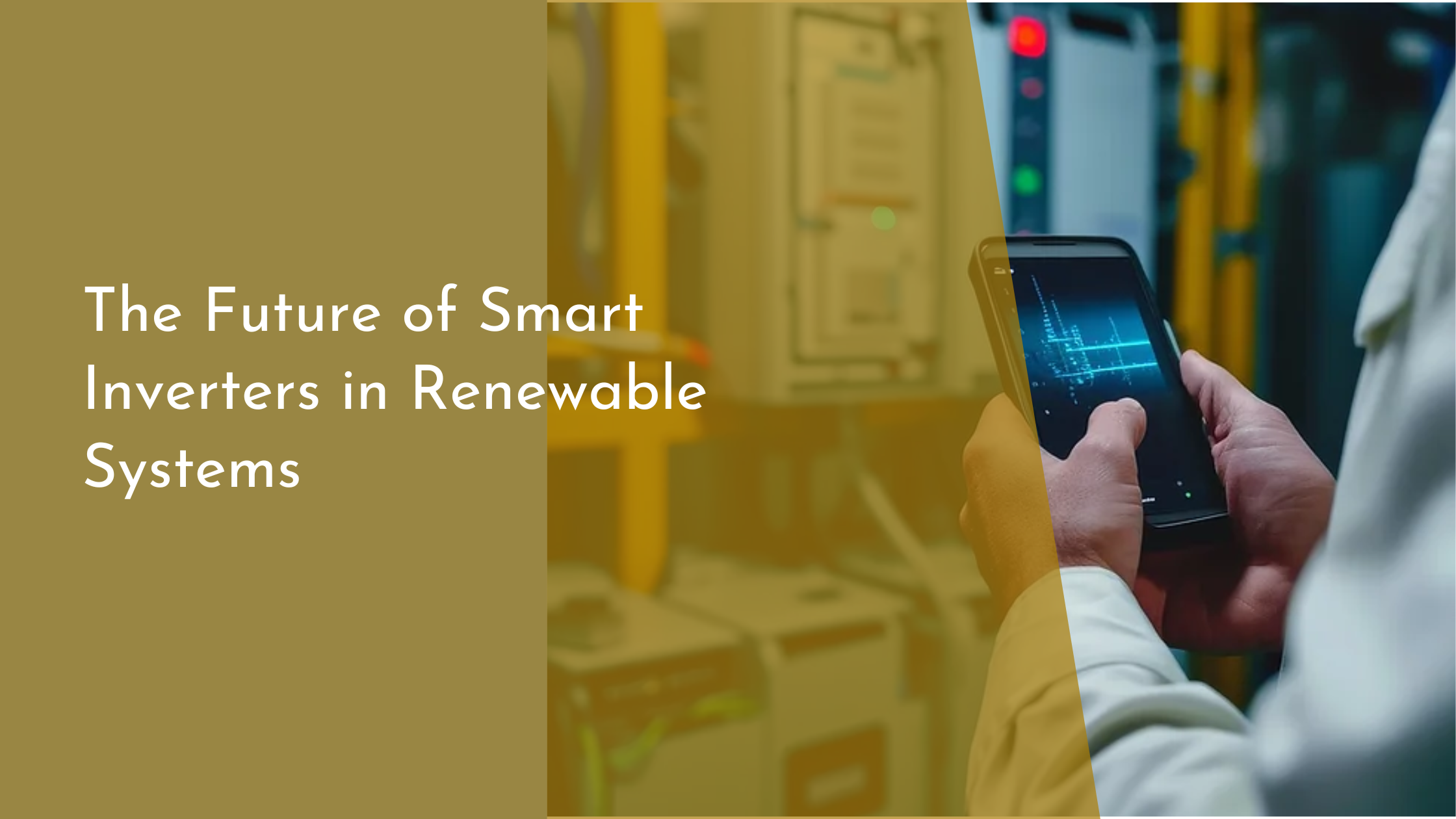The Future of Smart Inverters in Renewable Systems
The global push towards renewable energy has catalyzed advancements in technology, particularly in the field of smart inverters. These devices are crucial for the effective integration and management of renewable energy sources into power grids. As the world navigates towards a sustainable future, understanding the current role, innovations, and future potential of smart inverters becomes imperative for energy stakeholders and enthusiasts alike.
Understanding the Role of Smart Inverters Today
Smart inverters are pivotal in the transition from traditional energy systems to modern, renewable-based networks. Unlike conventional inverters, which simply convert direct current (DC) to alternating current (AC), smart inverters offer advanced functionalities that enhance grid stability and reliability. They provide real-time data and analytics, enabling utilities to monitor and manage energy flow more effectively. This capability is essential for accommodating the variable nature of renewable energy sources like solar and wind, which can fluctuate significantly due to weather conditions.
Moreover, smart inverters facilitate bi-directional communication with the grid, allowing for more dynamic interaction between energy producers and consumers. This feature is particularly beneficial in distributed energy systems, where multiple small-scale energy producers contribute to the grid. By supporting functions like voltage regulation, frequency control, and reactive power management, smart inverters play a critical role in maintaining grid resilience and efficiency, making them indispensable for modern renewable energy systems.
Innovative Features Driving Smart Inverter Evolution
One of the most remarkable innovations in smart inverters is their ability to provide grid support services autonomously. Advanced algorithms enable these inverters to perform tasks such as voltage and frequency stabilization, which are traditionally handled by centralized power plants. This decentralization of grid management tasks not only enhances the resiliency of the power network but also reduces the need for extensive infrastructure investments, making renewable energy systems more cost-effective.
Another significant feature driving the evolution of smart inverters is their integration with Internet of Things (IoT) technologies. By connecting to smart grids through IoT, inverters can communicate more effectively with other grid components, enhancing overall energy management. This connectivity allows for predictive maintenance, where inverters can identify potential issues before they become critical, minimizing downtime and extending the equipment’s lifespan. Additionally, IoT-enabled smart inverters offer enhanced cybersecurity features to protect against potential threats, ensuring the safe and reliable operation of energy systems.
Challenges and Opportunities in Smart Inverter Adoption
Despite their numerous benefits, the widespread adoption of smart inverters faces several challenges. One of the primary obstacles is the variance in standards and regulations across different regions, which can complicate integration into existing energy systems. Additionally, the initial cost of smart inverter technology can be prohibitive for smaller energy producers or developing regions, limiting their deployment in areas where they are most needed.
However, these challenges also present opportunities for innovation and growth. As global demand for renewable energy increases, there is a significant push towards standardization of smart inverter protocols and regulations. This effort can streamline the integration process and reduce costs through economies of scale. Furthermore, advancements in technology and manufacturing are expected to drive down the costs of smart inverters, making them more accessible and attractive to a broader range of users. Investment in research and development continues to enhance their capabilities, ensuring that smart inverters remain at the forefront of renewable energy innovation.
The Bright Future Ahead for Smart Inverters
The future of smart inverters is exceedingly promising, with ongoing technological advancements poised to further improve their performance and integration capabilities. As energy systems become more decentralized, the role of smart inverters will expand, enabling more efficient management and distribution of renewable energy. Innovations in artificial intelligence and machine learning are expected to enhance the decision-making capabilities of smart inverters, allowing for even more sophisticated grid management solutions.
Moreover, the increasing emphasis on sustainability and carbon reduction goals worldwide will likely accelerate the adoption of smart inverters. As countries set ambitious targets to lower their carbon footprints, smart inverters will be key enablers in achieving efficient and reliable renewable energy systems. Their ability to enhance grid stability, integrate distributed energy resources, and provide valuable data insights makes them indispensable tools in the global transition to a clean energy future.
Smart inverters are at the heart of the renewable energy revolution, offering unprecedented capabilities to transform how we produce, manage, and consume electricity. Their continued evolution and integration into energy systems promise a more resilient, efficient, and sustainable power grid. As the world embraces the challenges and opportunities presented by renewable energy, smart inverters will undoubtedly play a crucial role in shaping the future of global energy landscapes.

